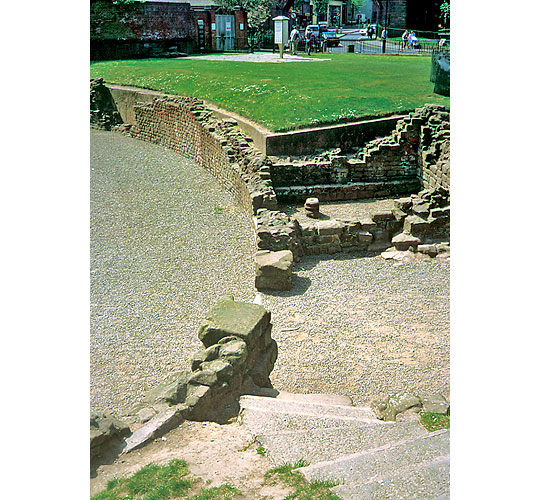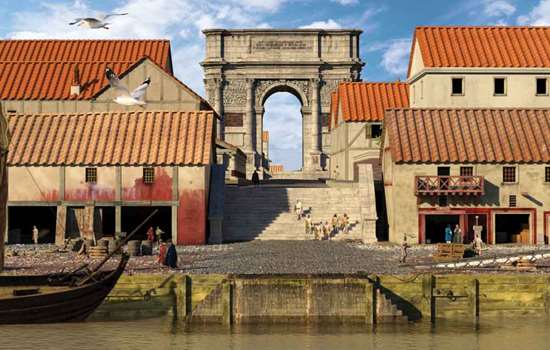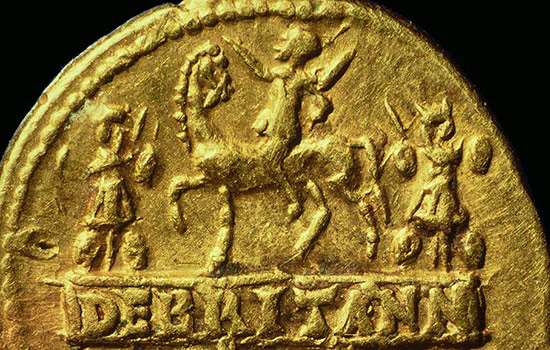History of Chester Roman Amphitheatre
Chester Roman Amphitheatre was built in the late first century AD, when many such buildings were being constructed throughout the Roman Empire. It lay just outside the south-east corner of the Roman legionary fortress, and was probably used both for entertainments and for practising troop manoeuvres and weapon training.

Only about two-fifths of the oval amphitheatre is visible; the rest lies unexcavated behind the brick wall. In the excavated part, two entrances have been exposed – the larger lies on the long axis to the north, while the smaller lies on the short axis to the east. Lining the arena is the original stone wall, although, owing to later removal, some sections are missing and there is modern concrete backing.
Excavations in the 1960s suggested that the building was originally constructed entirely of wood, but further archaeological investigation in 2001 cast doubt on this theory. The stone structure seen today had an outer wall 9 feet (2.7 metres) thick, marked out by concrete slabs set in the grass. Inside it ran a corridor linking the entrances that led to stairways taking the spectators up into the seating area.
Description
The two entrances visible today were used by the performers; their sloping floors show that the arena floor was sunk over 3 feet (1 metre) below Roman ground level. Just inside the corridor of the north entrance is a set of stairs, which led to a small room housing the officials who controlled activities in the arena.
Inside the arena was a small door to the left of the north entrance. The room behind it contained an altar dedicated to the goddess Nemesis, who was believed to control the fate of the performers. In most amphitheatres, these shrines were outside the arena; perhaps some performances in Chester included a visit to it.
The amphitheatre did not enjoy a long initial period of use: by the 120s AD it had become derelict and was being used as a rubbish dump. This happened around the time that the Twentieth Legion was posted north to help build Hadrian’s Wall. It was not until about AD 275 that it was brought back into use, when new paving was laid inside the arena, the shrine to Nemesis was refurbished and a colonnade was inserted in the east entrance. It remained as a functioning amphitheatre until finally being abandoned about AD 350.
During the 5th or 6th century there may have been a timber hall in the arena, standing for long enough to need rebuilding. Later the large blocks in the east entrance were inserted. On one side it is still possible to see the very worn steps that led down into this space, which was possibly built as the crypt of the original St John’s Church in the 7th century.
Most of the later history of the site is one of neglect and demolition – during the medieval period it was nothing more than a quarry for building stone and a convenient rubbish dump. By about 1200, houses had been built over it, and it was not until the 1950s that it was uncovered and later excavated.
Further Reading
Thompson, FH, ‘The excavation of the Roman amphitheatre at Chester’, Archaeologia (1976), 105, 127–239


